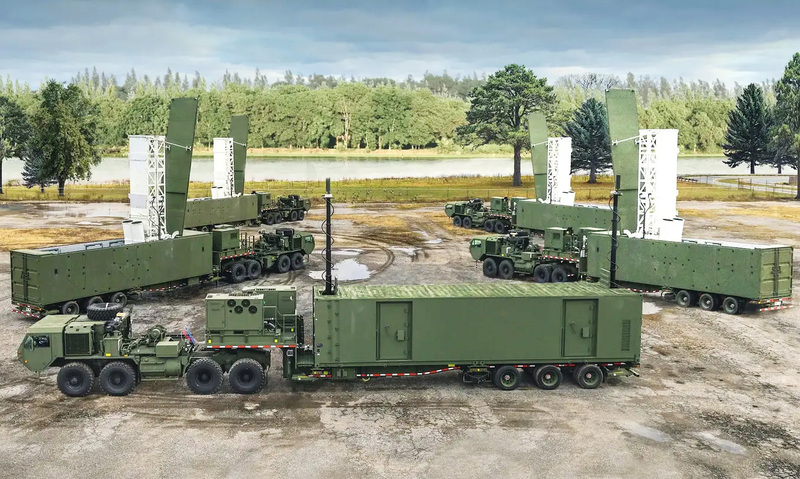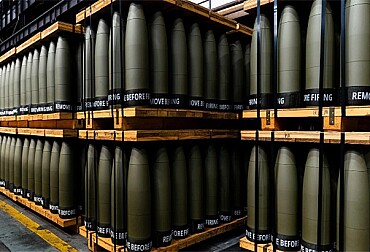The U.S. military deploys new missile systems
According to the latest news, the U.S. Army recently deployed one of its newest missile systems, the Typhoon, right on the doorstep of China to the Philippines. This comes after the hypersonic missile test from Guam and very likely means a strong signal to China.
The US Army Pacific recently deployed elements of one of its newest missile systems to the Philippines. The system, called the Typhoon, is capable of firing Tomahawk land attack cruise missile and SM-6 missile defense interceptors. Initially, the system belonging to the 1st Multidomain Task Force went to the Philippines for the Salaknib 24 exercise, and it is very likely that elements of the Typhoon battery are there to stay, at least for some time.

According to the US Army Pacific, the Typhoon launcher was transported from Joint Base Lewis-McChord near Seattle, approximately 15 hours of flight from the Philippines. Transport of the entire battery (consisting of four launchers and other support vehicles) would require several flights of C-17 back and forth. However, with the ability to launch both the Tomahawk and SM-6 missiles, Typhon could pose a threat to all high value targets in a range of approximately 1600 kilometers.
The deployment of the Typhoon missile system close to the doorstep of China and sensitive areas such as Hainan Island with its naval base or Chinese military bases across the South China Sea sends a strong signal to Beijing. Moreover, this move could also complement US actions regarding recent clashes between the Chinese Coast Guard and its Philippine counterparts near Second Thomas and Scarborough Shoals.
On the other hand, the US Army is not the only service that attempts to boost its long-range missile capability, primarily linked with preparations for possible war in the Indo-Pacific region. The US Marine Corps also recently introduced their own missile system under the Remotely Operated Ground Unit for Expeditionary Fires (ROGUE Fires) program, which includes an unmanned version of Joint Light Tactical Vehicle mounted with single Tomahawk cruise missile launch tube. The US Marines also test-fired a Tomahawk missile from the aforementioned unmanned vehicle. Still, from the test occurred recently in the public. As pointed out by the then Commandeer of the US Marine Corps, Gen. David Barger in March 2023, Marines plan to create three long-range missile batteries (16 ROGUE launchers per battery) in one battalion of those launchers ready to deploy one battery around 2030.
Together with the Navy Marine Expeditionary Ship Interdiction System (NMESIS) - an unmanned Joint Light Tactical Vehicle equipped with a pair of Norwegian-American anti-ship cruise missile systems (Naval Strike Missile with range of 200 to 250 kilometers), ROGUE Fires project is an answer to People´s Liberation Army (PLA) modernization and expansion primarily in the field of missile forces and the PLA Navy. As a whole, ROGUE fires and NMESIS are part of a broader concept of more expeditionary and distributed operations on denied and degraded areas with connection of aforementioned hypothetical war with China. It is currently not known where the battery of ROGUE Fires mentioned by Gen. David Berger could be deployed in the future. However, due to the US prioritization of the Indo-Pacific region and ongoing expansion of the PLA capabilities, it is likely that the battery will be, at least for an undisclosed period of time, stationed in Japan, Philippines, Australia, or Guam.
The deployment of the Typhoon missile system to the Philippines shows that the US does not underestimate and overlook the development throughout the Indo-Pacific region. China, on the other hand, predictably protests and in the diplomatic domain. The reciprocal reaction of PLA has yet to be seen. The PLA could increase its activities against the Philippines in the South China Sea, deploy additional missile defense or missile systems such as a DF-100 cruise missile with a range of 2000 to 3000 km to existing bases in the South China Sea.
What is yet to be seen is also a European reaction and potential deployment of missile systems to eastern flank of NATO in the context of threat from the Iskander short-range ballistic missiles mainly from Belarus, potential land-attack version of K-300P Bastion coastal defense missile system deployed to Crimea, and Zircon hypersonic missile deployed to ships in the Black Sea Fleet.










